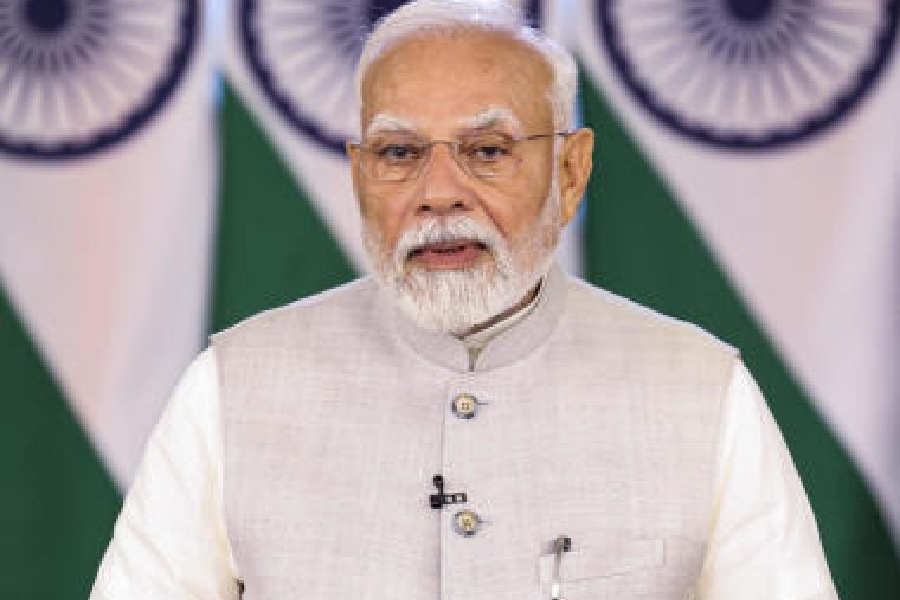|
|
| Calculated disparagement |
One of the strangest episodes in the curious history of Indian cricket began on January 2, 1992 at Sydney on the opening day of the third Test between India and Australia. There were two debutants in this match. The Australian debutant, a roly-poly spinner, got no wickets for 150, followed in the next Test by none for 78, was selected nevertheless for Australia’s next tour of Sri Lanka, where he improved his Test performance to three for 158. He was then chosen to play Australia’s next opponents, the West Indies. The West Indians were never noted for their ability to play spin and our spinner emerged from the series with a creditable 10 wickets at 31 apiece. He was then launched against New Zealand, cricket’s most notorious rabbits against spin bowling; and of course he massacred them. A cricket legend was in the making. A few months later came ‘the ball of the century’, the magical delivery that bowled Mike Gatting as the hypnotized batsman watched incredulously: Shane Warne was well on the way to becoming ‘the bowler of the century’ and possibly ‘the best spinner of all time’.
The Indian debutant’s fortunes followed a rather different course. A pace bowler, he was brought into the attack on the first morning after Kapil and Prabhakar could not dislodge the Australian openers, Taylor and Marsh. He promptly bowled out Marsh. After he was rested, Taylor and Boon comfortably added almost a hundred before Azhar recalled him. He immediately had Taylor caught behind and Mark Waugh caught in the slips. He was given very little to do thereafter but finished the innings with three for 47 off 18 overs. India then amassed a lead of 170 runs thanks to a double century from Shastri and a century from Sachin. In their second innings, Australia struggled for five hours to avoid an innings defeat. Eventually, they reached 173 for eight when the match ended. The Indians lost their only opportunity to redeem themselves on a tour in which they had been soundly thrashed everywhere else. During these five hours, with India’s only victory looming as a very real possibility, the debutant, the outstanding bowler in the first innings, was not asked by his captain to bowl a single ball. Nor was he played in the two subsequent Tests, in which India were crushed as usual. He ended the tour on top of the Test averages at 15 runs a wicket, but never played for his country again. Meanwhile, his rival, Srinath, who also made his debut in that series, played all five Tests, finished at the bottom of the Test averages (at 55 runs a wicket), became an indispensable member of the Indian team and was recognized as the successor to Kapil. To this day, our Sydney debutant stands at the top of India’s all-time Test bowling averages. But no one knows his name. Ever heard of S.T. Banerjee?
What does one make of the tragic tale of Subroto Tara Banerjee? One may meditate on the jinx that bedevils Bengal pace bowlers, in particular those named S. Banerjee. Consider the plight of S.N. Banerjee (Shute), who, despite impressive performances against Jack Ryder’s Australians in 1935-6 and Lord Tennyson’s Englishmen in 1937-8, spent his youth in the massive shadow of Nissar and Amar Singh and his middle years (far more inexplicably) in the rather puny shadow of S.W. Sohoni without playing an official Test. Eventually summoned for national duty at the age of 39, the oldest fast bowler ever to make his debut in Test cricket, Banerjee captured five for 125 against Walcott, Weekes and Co. in the famous match in which India failed by just six runs to beat West Indies. Or, think of S.A. Banerjee (Montu), whose debut occurred earlier in the same Test series against the West Indies, who broke their opening partnership in his first over in Test cricket, dismissed the other opener shortly, again separated the openers in the second innings, ended up with five wickets in the match and never bowled for India again.
If, however, you are sceptical about jinxes and dismiss this as mere coincidence, two lessons remain to be drawn from the contrasting fates of Warne and Srinath on the one hand and S.T. Banerjee on the other. The first relates to the role that early encouragement plays in the blossoming of individual potential. Could any debut have been less promising than that of Warne? Could any paceman have been manhandled more savagely in his initial series than was Srinath? The fact that, throughout these ordeals, their captains and the selectors never lost faith in their ability protected their self-confidence from the sledge-hammer impact of cruel experience. And, conversely, nothing is easier than to nip early promise in the bud by calculated disparagement. No blow to Banerjee’s morale could have been more devastating than denial of the ball in the second innings at Sydney. That the youngster was the only successful bowler on the opening day of the Test after Azhar had won the toss and inserted Australia, that he had thereby saved his captain’s face, that he had dismissed three of the finest batsmen that Australia had produced all meant nothing to Azhar — and therefore, in the ultimate analysis, to Banerjee. When neglect in the second innings was followed by omission from the subsequent Tests, the only conclusion that Banerjee could have drawn was of the futility of all effort.
The second lesson of our story is the indispensability of godfathers in a field dominated by huge monopolistic hierarchies like the Board of Control for Cricket in India. Nothing illustrates this theme better than the chequered career of Sourav Ganguly. Selected at 18 for the same Australian tour as S.T. Banerjee but never played, he had to await his chance till after the 1996 World Cup when Jagmohan Dalmiya and the Cricket Association of Bengal dominated Indian cricket. He was selected for the 1996 tour of England, but even there ran into Azharuddin (who else?) and was not played till the Lords Test towards the end of the tour when the angry retirement of Sidhu and injuries to key batsmen left his captain with no other option. The rest, of course, is history. However, as soon as Dalmiya was eclipsed, the knives were out for Sourav. Disposing of India’s most successful captain and a batsman of the highest international class took some doing. The initial palace coup, plotted by Chappell and More, unravelled because of the egregious Greg’s success in destroying the Indian cricket team, forcing the recall of Sourav as saviour in South Africa. But the powers that be persisted and compelled his eventual retirement at the top of his form on the pretext of age while others as old or even older continued undisturbed. Now that Sourav has left the scene, age is regarded as irrelevant.
Nothing is more unfortunate about competitive sports than their control by massive monopolies. Monopoly incomes are protected from the pressure of competition at least in the short run: monopolists, therefore, lack the incentive for continuous excellence. They can accordingly shelter individuals — administrators, selectors, coaches, captains — to whom performance is subsidiary to personal interest or enrichment. As long as such a regime persists, tragedies like S.T. Banerjee’s will be repeated and motivated turbulence continue to be stirred up to drive high-performing but inconvenient individuals out of the game.












